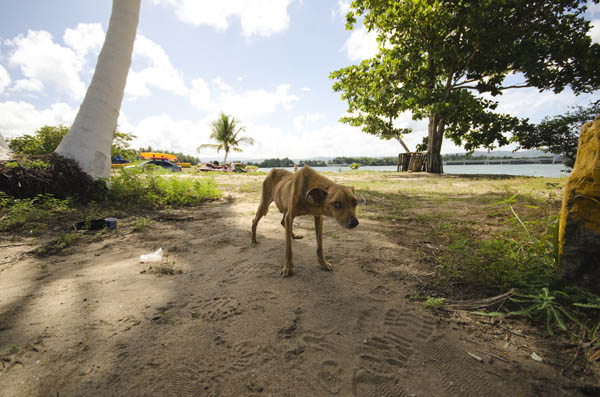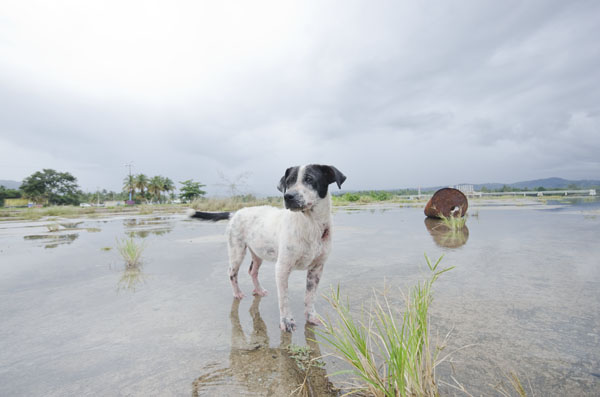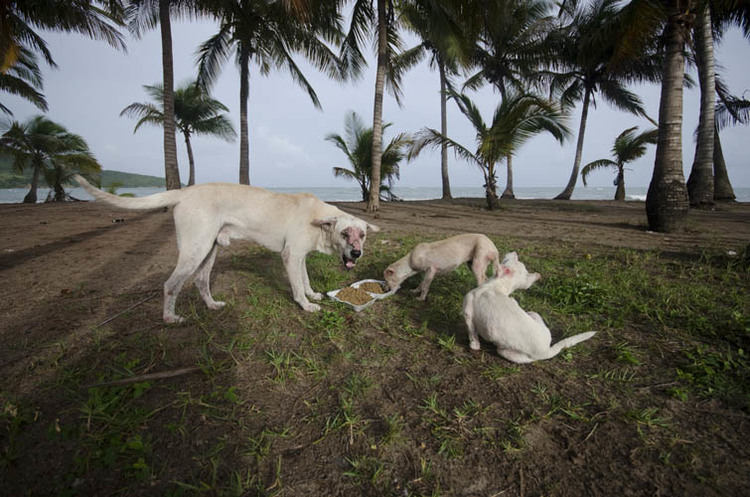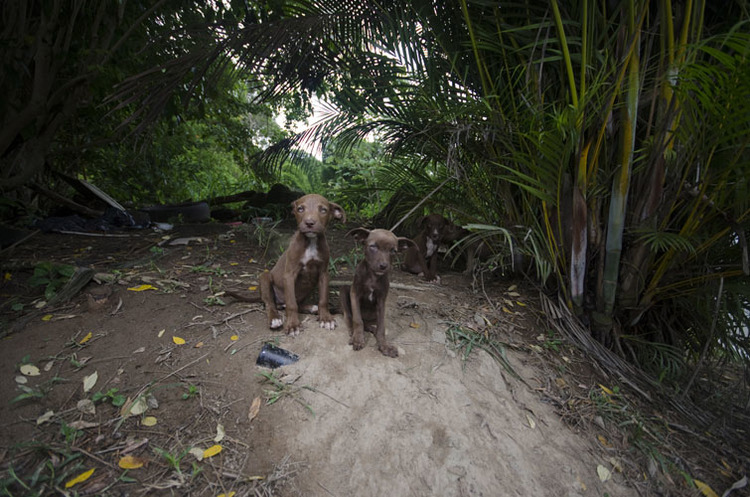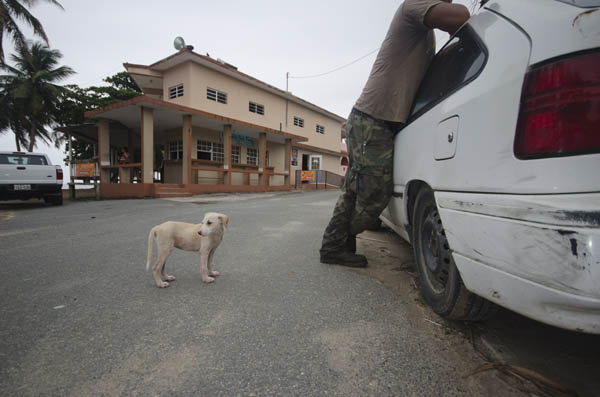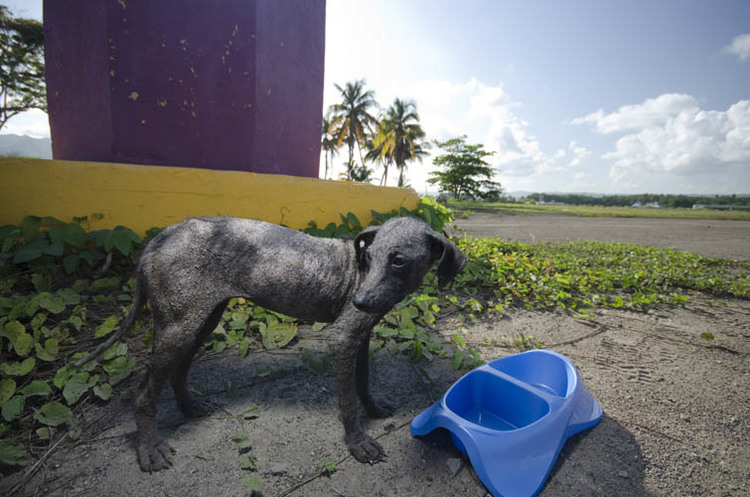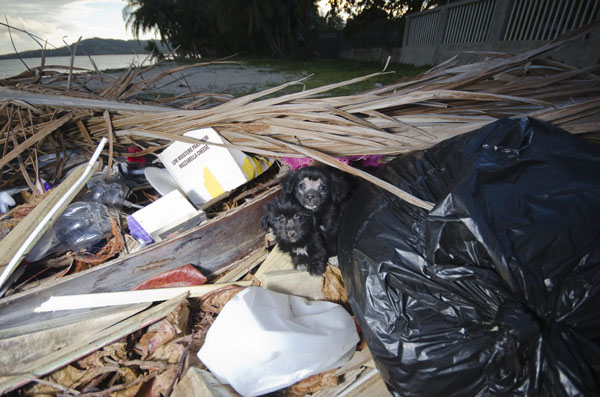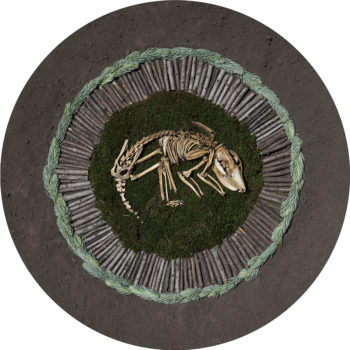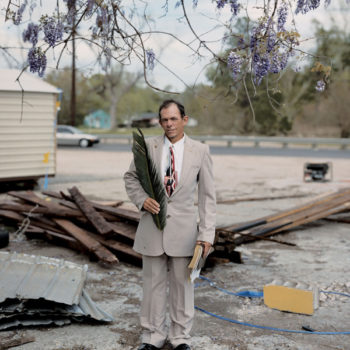“There are 250,000 stray dogs in Puerto Rico, a US Commonwealth about the size of Connecticut. The stray population keeps on growing and no humane solution has yet been found.” This is the startling fact that introduces Sophie Gamand’s series, Dead Dog Beach. The southeast coast of the island of Puerto Rico is a dumping ground known for its stray dog population and the atrocities that have occurred there. Dogs are dumped on the isolated beach every day. Although people do own dogs as pets, they see strays as vermin. The animals live short lives of neglect and abuse, used as target practice or run over by cars.
Every image in the series is heartbreaking, a portrait of a neglected dog and a day in its life. The body of work reminds me very much of my own similar project, More Dogs than Bones, in which I photographed the dog overpopulation problem on the Navajo Nation American Indian reservation in Arizona and New Mexico that contains an estimated 160,000 stray dogs and cats. Both situations suffer from a lack of resources as well as a tenet generally accepted in the culture. For viewers living in the many places where dogs are treated like a part of the family, the images of other scenarios are shocking.
From the artist’s statement: On the beach, some of the dogs are very frightened or completely feral. Others have lived in homes and follow people around the beach, wagging their tails, looking for their owners, food, or a gentle hand. Some dogs are in a state of shock. Others, reconnecting with their deep wild nature, organize themselves into packs in their battle for survival.
As I am photographing, I sometimes wonder: could the dogs of Dead Dog Beach survive on their own? If not, why can’t they? Has our bond with dogs made us so codependent that we feel the need to rescue them, and has it made dogs unfit for life in the wild? The pursuit of these questions fuels my photographic exploration.
From “Dead Dog Beach”
Visit artist's site: sophiegamand.com
Found via: Feature Shoot
Posted May 11th, 2015

